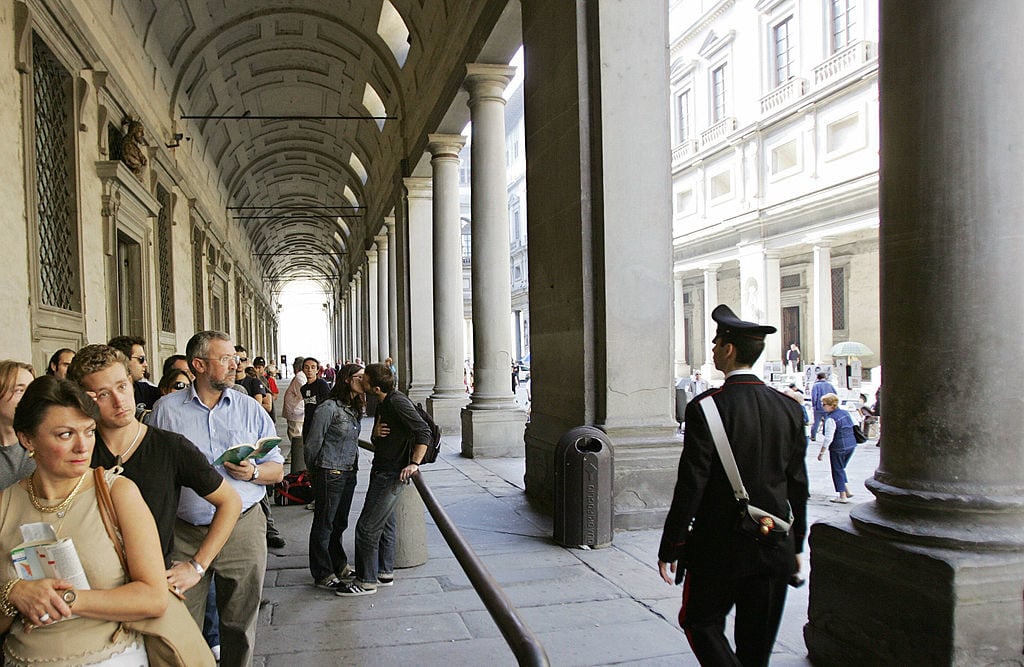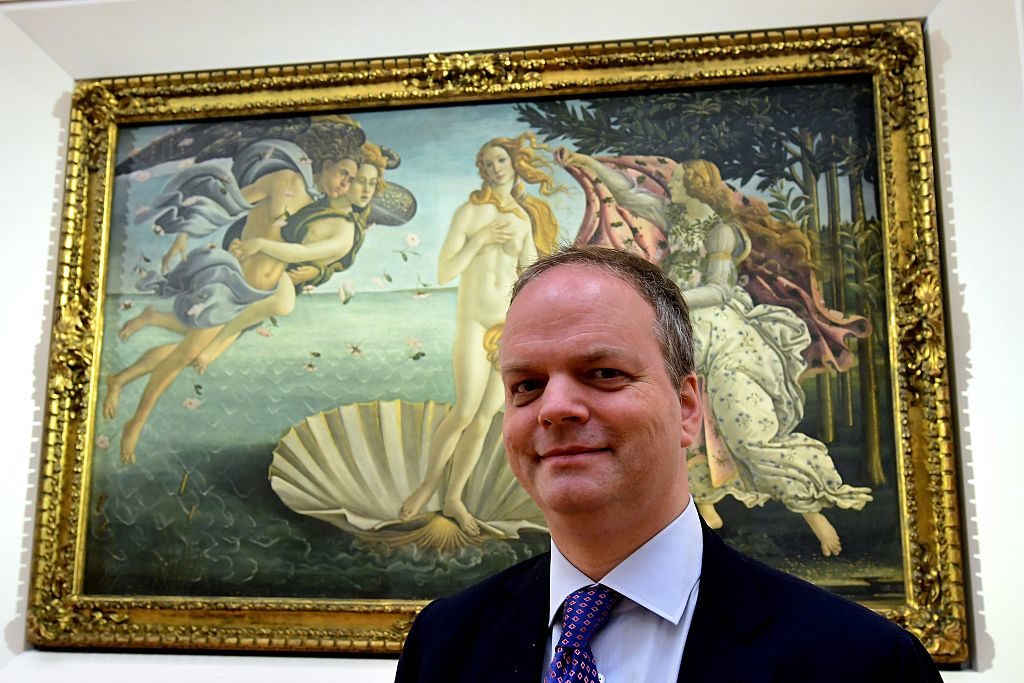Art World
Searing Temperatures in Italy Force the Temporary Closure of Florence’s Uffizi Gallery
The director assured artnet News that the collection was not affected by the day's events.

The director assured artnet News that the collection was not affected by the day's events.

The heatwave currently sweeping Europe, aptly known as “Lucifer,” forced the closure of the Uffizi Galleries in Florence on Friday.
The gallery, which is Italy’s most-visited art museum and is particularly crowded during the high summer tourist season, closed around 1:30 p.m. on Friday, more than five hours early. The Uffizi’s director, Eike Schmidt, explained to artnet News that the water levels of the river Arno, which supplies the gallery’s air conditioning system, dropped so low that the system was unable to run at full capacity.
#Today #Uffizi closed due to a malfunctioning of the air conditioning system. #Tomorrow regular opening.We apologize about the inconvenience pic.twitter.com/i3Od132GTG
— Gallerie Uffizi (@UffiziGalleries) August 4, 2017
More than half Italy’s 20 regions are primed to declare a state of emergency to tackle the ongoing drought. Temperatures in Florence rose to 39°C (102°F) on Friday afternoon.
Armed with additional water supplies, the Uffizi—home to Sandro Boticelli’s The Birth of Venus (c. 1486) and Leonardo Da Vinci’s Adoration of the Magi (1481)—opened Saturday morning at 8:15 a.m. as usual.
Excessive heat and moisture can distort artwork, causing dimensional changes, chemical reactions, or bio-deterioration. Generally, paintings must be kept at around 21°C (70°F ) and at 55 percent relative humidity; it is estimated that a mere 4ºC (7.2°F) increase in storage temperature may be reflected in a 40–50 percent reduction of a work’s lifespan.
Schmidt assured artnet News that the temperature and humidity levels never exceeded recommended levels, and that closing the gallery was a preventative measure to protect the artwork as well as the comfort of the visitors.

German Eike Schmidt director of Uffizi Gallery poses in front of The Birth of Venus by Italian painter Sandro Botticelli. Photo: Alberto Pizzoli/AFP/Getty Images.
“The good news is that since we stopped people flowing into the galleries, the absence of human visitors, who are each their own little humidifiers and ovens, and with additional water deliveries, we were able to power up the system, and stabilize the temperature and humidity levels,” Schmidt says.
Visitors were fully reimbursed for their tickets, but the director said that the museum incurred no significant financial loss. “In the past few months, we’ve actually exceeded our expectations, so this did not actually affect us at all,” he notes.
Severe weather warnings have been issued for several European travel destinations, including Italy, due to the heat wave. Temperatures have been projected to reach upwards of 40°C (104°F) and the European meteorological alert network, Meteoalarm, warned of dangerous weather in nine other countries, including Croatia, Hungary, and Poland.
For its part, the Uffizi is already considering contingency plans in the future. Schmidt says: “The Boboli Gardens has its own water supply: so if the summers get hotter and hotter and the Arno tide lower and lower, the next step would be to construct a pipeline from the Boboli gardens to the Uffizi.”